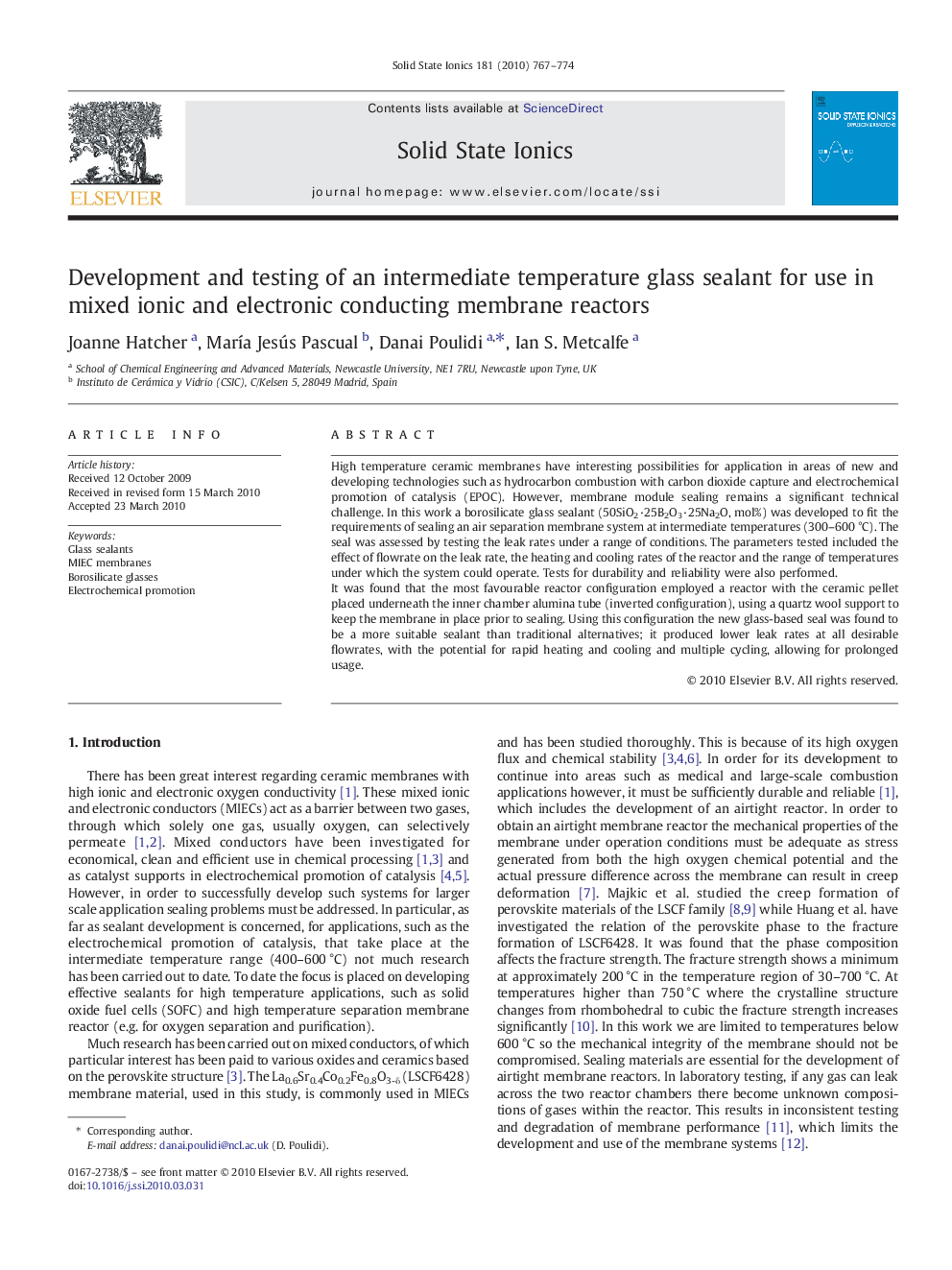| Article ID | Journal | Published Year | Pages | File Type |
|---|---|---|---|---|
| 1297720 | Solid State Ionics | 2010 | 8 Pages |
High temperature ceramic membranes have interesting possibilities for application in areas of new and developing technologies such as hydrocarbon combustion with carbon dioxide capture and electrochemical promotion of catalysis (EPOC). However, membrane module sealing remains a significant technical challenge. In this work a borosilicate glass sealant (50SiO2·25B2O3·25Na2O, mol%) was developed to fit the requirements of sealing an air separation membrane system at intermediate temperatures (300–600 °C). The seal was assessed by testing the leak rates under a range of conditions. The parameters tested included the effect of flowrate on the leak rate, the heating and cooling rates of the reactor and the range of temperatures under which the system could operate. Tests for durability and reliability were also performed.It was found that the most favourable reactor configuration employed a reactor with the ceramic pellet placed underneath the inner chamber alumina tube (inverted configuration), using a quartz wool support to keep the membrane in place prior to sealing. Using this configuration the new glass-based seal was found to be a more suitable sealant than traditional alternatives; it produced lower leak rates at all desirable flowrates, with the potential for rapid heating and cooling and multiple cycling, allowing for prolonged usage.
